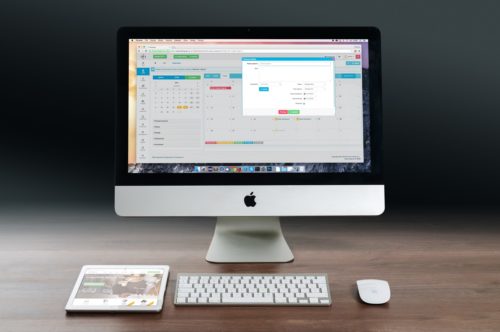The average viewer on the internet only stays on each website for a few seconds. After that, they’ll either decide to stay and explore your content further, or they’ll click away to somewhere else. When designing your website, you need to make those few seconds count! Having a poor design is an easy way to lose vital visitors, and your website needs to look it’s best to attract the right visitors. If you’re new to website design, you might not even realize you’re making mistakes! Even if you’re a skilled designer, you might still make these mistakes if you aren’t careful! Read on to see the web design mistakes you should always avoid.

Your website isn’t built for mobile devices
By far, one of the worst mistakes you can make when designing a website is failing to make it mobile responsive. In this age of mobile devices, more people are accessing websites from their smartphone and tablets than ever before. It’s perfectly normal to expect the majority of your viewers to only see your website from a mobile device! That means your website needs a design that looks both great on a big desktop and on a small phone screen.
If you’ve ever visited a website on your phone and had it show up odd, you probably didn’t stick around very long. Websites should be readable and easy to navigate all from the palm of your hand. Luckily, most designs are mobile responsive already, but you should do your best to optimize your design for all screens no matter what!
Your design does not load quickly
Another mistake that a lot of new designers make unintentionally is creating a website that doesn’t load quickly. Remember how little time you have to make an impact on your website visitors? That means if your website takes more than a few seconds to load, it’s unlikely new visitors will stick around and wait for everything to appear properly. If you’re unsure how quickly your website design loads, use an online tool for measuring your response speed.
Some of the common reasons website designs take a long time to load include having unnecessarily large images that need to be compressed or hosting large files on the website server. Whenever possible, host large files and images externally with a trusted host, and use a compression plugin to improve your speeds.
Too many hard to read fonts
When designing a website, you’re likely to choose the fonts you think complement the branding the best. This is a great idea, and it helps people recognize your blog and create a distinct image. That being said, there is such thing as the wrong font selection. Unlike graphics, websites are meant to be read. If users aren’t able to easily read your website text, odds are they won’t be sticking around for very long. Do yourself a favor and choose fonts for your website design that are easy to read! If you’re not sure if something is easy to read, have a few people test the design first to see if they have any feedback.
Your website has confusing navigation
This step to create a blog is important. You need a clear and easy to use navigation for your website and you want users to be able to find pages and content with ease. They shouldn’t get lost in a spiral of confusing links and navigation elements. Have one clear navigation bar with as few drop down menus as possible. The more elements you add to your navigation, the more confusing it is for users to find what they’re looking for.

Instead of including pop-up links, make sure your links all open in the same window. Pop-up links are annoying to visitors and will leave them unwilling to keep clicking through your website. Navigation is supposed to be easy, so be sure to simplify it for your users! The best way to make sure visitors can find exactly what they want is by including a central search bar where users can search directly for a page or item they want to find without digging through pages.
You burry the most important details
Some websites have an overwhelming amount of content, especially on the home page. This makes it challenging to learn what the website is even about! When designing a website, really pinpoint the purpose of the page. Are you selling a product? Are you educating readers? From there, make sure this purpose is clear from the moment users click to your page.
To this effect, limit the amount of content on the homepage and in the sidebar and footer. New web designers are quick to fill this space with filler and fluff. This offers nothing to users, and it just makes it more difficult to understand the website. Less really is more when it comes to populating page content! If the homepage features blog content, make sure it’s high quality! Avoid large blocks of text that are unappealing to readers. Think of what makes you more excited to read other websites and incorporate these elements into your own website design.
Finally, don’t forget to test your website
One of the biggest mistakes web designers make is failing to test their websites completely before launch. Nothing is worse than clicking a link and finding a broken page. Nothing is more embarrassing than a contact form that doesn’t work or the wrong color code on a link. These small things add up to big things in the eyes of new users, and they can make or break your website reputation.
Always test things like links, pages, and design before you officially launch! If you need help, see if a friend will click through pages for you to see if everything is working properly. Sometimes a fresh pair of eyes is key to seeing something you didn’t notice on your own.
Don’t make these design mistakes!
Anyone can design a great website nowadays! There are an endless amount of tools and resources for designers of all levels to take on their own web design projects. While it’s easy to get started, it’s also easy to make mistakes. Don’t let your website suffer because of these web design mistakes! If you check for all of these, you’ll be on your way to a great website!